[Leicester North]
[Abbey Lane Area]
[North Viaduct]
[Leicester Central]
[Braunstone Gate]
[Goods Yard]
[Aylestone]
[Bridging the Gap]
[Notes for Visitors]
[Old Photographs]
[Archive]
[Links]
Old Photographs Section
This section includes a set of photographs generously provided by Phil Herrick of the early days of pioneering volunteers of the MLPG (Main Line Preservation Group) campaigning to preserve this section of the GCR.
The MLPG was soon renamed the MLST (Main Line Steam Trust), under which name the early preservation moves on the railway were undertaken.
Graham Oliver has kindly sent the photograph of Richard Willis and himself inspecting the line shortly after closure, and a scan of the front of the MLPG appeal leaflet.
John Powdrill has kindly identified many of the volunteers manning the early appeal stands.
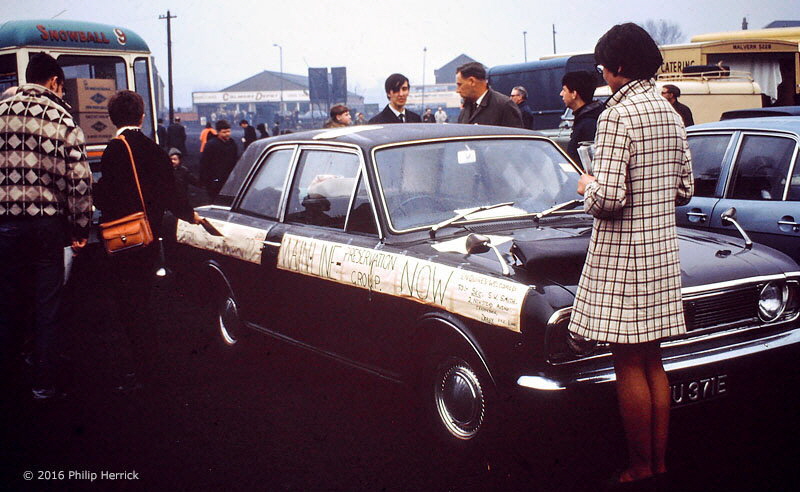
Above is one of the early publicity events of the MLPG (Main Line Preservation Group, the predecessor to the Main Line Steam Trust) at Tyseley Open Day in 1969.
Robert Kilburn is standing on the
far left with his back to the camera, while Malc Law is behind the car and facing the camera.
The banner on the car says “Great Central: Here Yesterday, Gone Today, STEAM Tomorrow?? Join MAIN-LINE Preservation Group NOW. Enquiries
Welcome.”
John Powdrill has pointed out the ‘News’ item in ‘Main Line’ No. 1 (The Newsletter of the Main Line Preservation Group): “Our thanks are due to one of our members, Mr. Kilburn, for decorating his car for use as a stall at Tyseley Open day ......”.
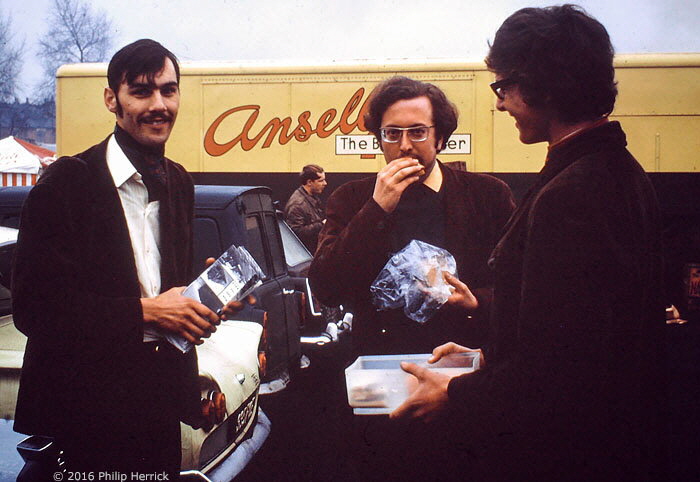
Here are some of the other pioneering stalwarts who were drumming up support at Tyseley for the MLPG. They are, from left to right, Graham Oliver, Roger Holmes (treasurer of MLPG), and Phil Herrick.
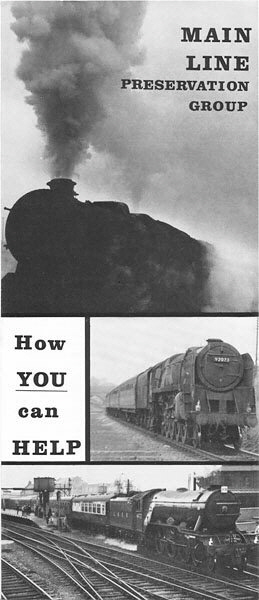
The front of one of the leaflets for Main Line Preservation Group that were being handed out at Tyseley. Courtesy of Graham Oliver.
MLPG stand at the City of Leicester Show, 1969
A more substantial display was put on by the MLPG at the annual City of Leicester Show, in Abbey Park, over the Summer Bank Holiday of 1969.
John Powdrill has kindly
identified the volunteers manning this stand in the following photographs.
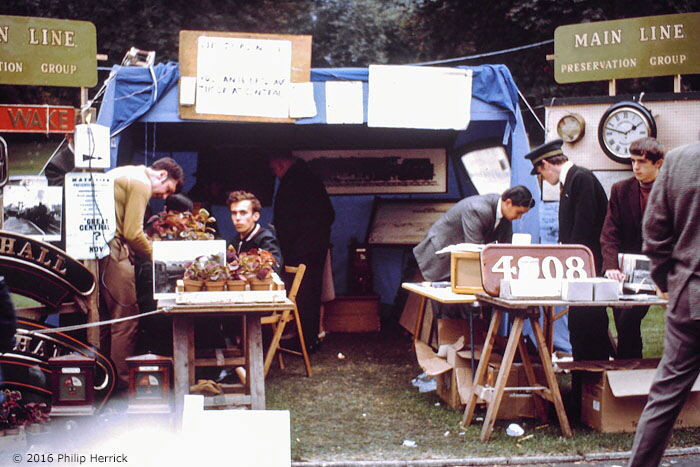
On the left: John Kilburn (looking down), Alan Coltman (sitting). On the right: Richard Willis (looking down), Harry Wheatley (in Acting Station Master’s uniform), John Bailey (in front of clock).
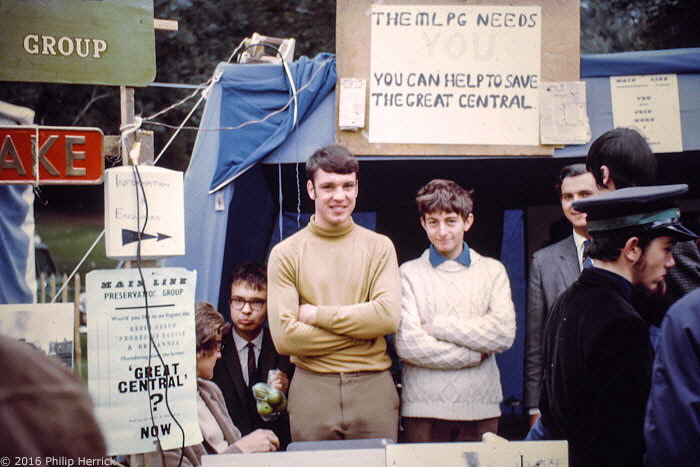
From the left sitting: Philip Herrick (looking back), Robert Kilburn (with spectacles); standing: John Kilburn, unknown, Richard Willis (Chairman of MLPG, partially obscured by the peaked cap), Malc Law or Graham Oliver (looking back), John Powdrill (in peaked cap).
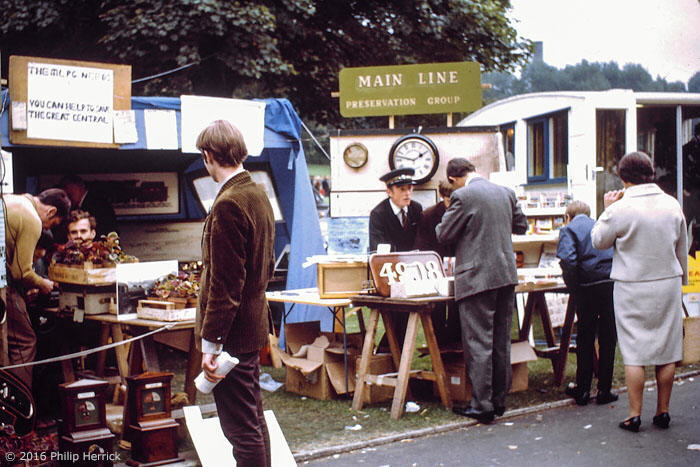
John Powdrill passes on the information that: “As well as being supporters of MLPG, Robert Kilburn, John Kilburn, John Bailey, John Powdrill and Harry Wheatley were all members of the Leicester Industrial Locomotive Group which purchased Bagnall 0-6-0ST Lamport No3. In 1969. Lamport went on to serve on the Great Central from 1973 for a good part of the early period of steam running from Loughborough (see Main Line Spring 1973 p19 and Summer 1973 p21 – with John Powdrill and Steve Hallam – another LILG member) before moving to the Battlefield line later.
Harry Wheatley, John Powdrill and Alan Coltman were also part of the MLPG subgroup entitled: The Belgrave and Birstall Action Group (BBAG). Harry had taken on the role of “Acting Station Master” (see Main Line No 2 – Autumn 1969 p13). The caps were ex RAF surplus, purchased with the somewhat misguided intention of instilling an ethos of “respectable authority” which, on reflection, more probably had the reverse effect”.
Surveying the line, 1970/71

Graham Oliver and Richard Willis, in a photograph taken by Richard Lovatt, during one of the many walks that they made along the line in 1970/71. Courtesy of Graham Oliver.
The original vision of the Main Line Preservation Group (MLPG) had been to preserve the whole double-track section from Nottingham Arkwright Street, through Leicester Central, to Rugby Central. This did not prove feasible, though with tremendous volunteer effort it has been possible to preserve the sections Ruddington to Loughborough and Loughborough Central to Leicester North, which are soon to be joined together.
The preserved GCR at Loughborough Central in 1973
The name of Main Line Preservation Group was changed to Main Line Steam Trust (MLST) and agreement was reached with British Rail to start restoring the stations. Initally steam locomotives provided footplate rides within the Loughborough Central site, but later in 1973, with access charges and using BR pilot men, steam trains started to be run between Loughborough and Quorn & Woodhouse.
This series of photographs shows the tremendous work put in by the volunteers during this period.

Early steam train rides at Loughborough Central were on the footplates of the 0-6-0ST locomotives no. 39 and ‘Robert Nelson No. 4’, seen here, giving a return trip between the stairs on the platform and the signal box. 31/3/73.

Most of the rooms on Loughborough Central station required considerable work before they could be used, mainly because the lead had been stripped from the flat roofs and all the rooms were affected
by damp and dry rot. This photograph shows the platform 1 entrance to what was to become the buffet, with bags of Gyproc joint filler plaster by the door. 31/3/73.
The sign to the right of the door says
“AFTER RENOVATION - BUFFET
Refreshment facilities are an essential facility on a project such as ours and as soon as the sales shop is completed then the BUFFET becomes number one
priority. Visitors can obtain tea, coffee, soup, minerals, crisps, sandwiches, cakes and light snacks, under the plans for the BUFFET.
Renovation means removing all plaster, treating for dry rot, fitting plaster board,
decorating and fitting buffet equipment.
TEMPORARY REFRESHMENT FACILITIES WILL BE FOUND FURTHER ALONG THE PLATFORM.”
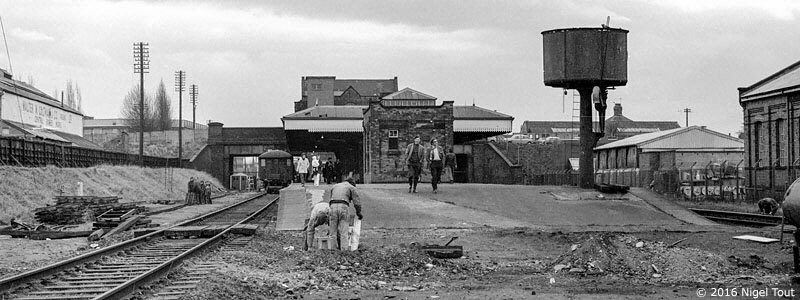
Looking south along the platform at Loughborough Central. Standing at platform 1 is one of the Norwegian carriages which came with the locomotive ‘King Haakon VII’. To the left of the carriage can be seen the start of the 10¼” gauge miniature railway leading from its little shed and which would be extended to Empress Road bridge. On this track the live steam locomotive ‘Waverley’ would run with its train for a year or two before the space was required for a standard gauge siding. 31/3/73.
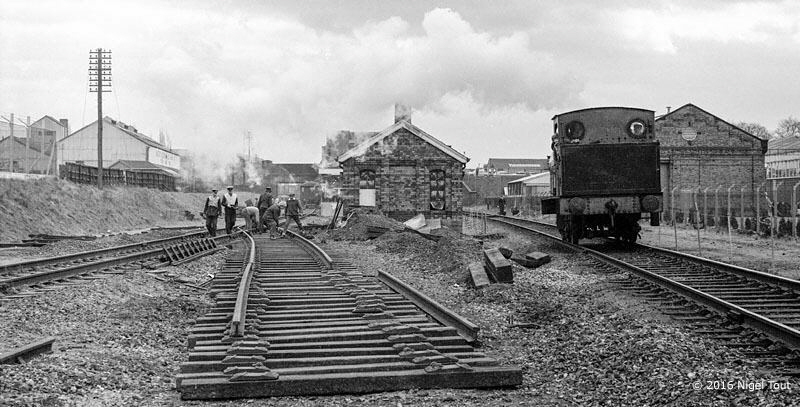
Here, work is progressing on installing the north crossover at Loughborough while ‘Robert Nelson No. 4’ passes on its way to the signal box with its complement of passengers experiencing footplate rides. 31/3/73.
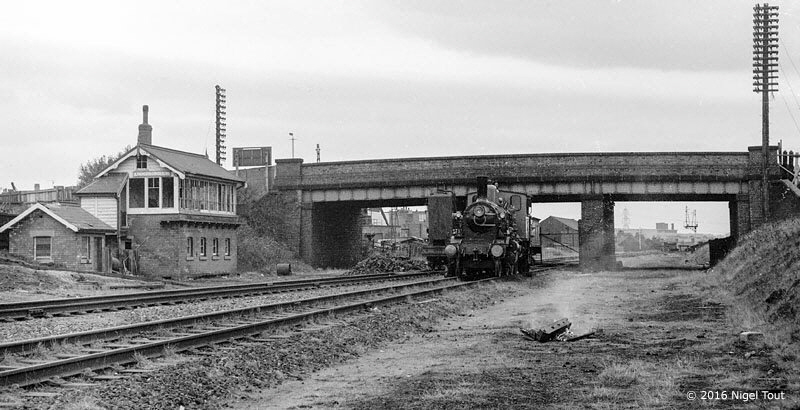
The view towards Empress Road bridge looks like a barren waste with a windowless and gutted signal box on the left and an open expanse beyond the bridge where the locomotive shed would soon be built. In the centre is the steam crane and the ex-Norwegian 2-6-0 locomotive ‘King Haakon VII’. 31/3/73.
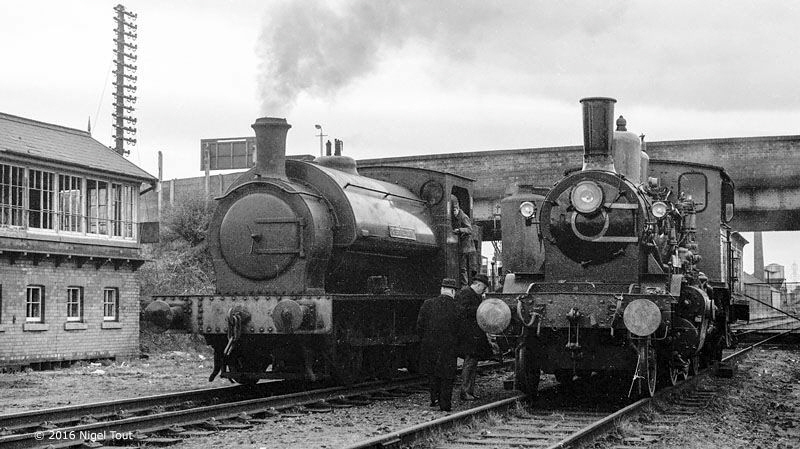
Here 0-6-0T ‘Robert Nelson No.4’ has arrived between the signal box and ‘King Haakon VII’ with one of its footplate ride trips. 31/3/73.

The signal box at Loughborough Central was windowless and had been gutted, but was receiving attention. Soon it would be restored using the signal frame saved from Ruddington box. 31/3/73.
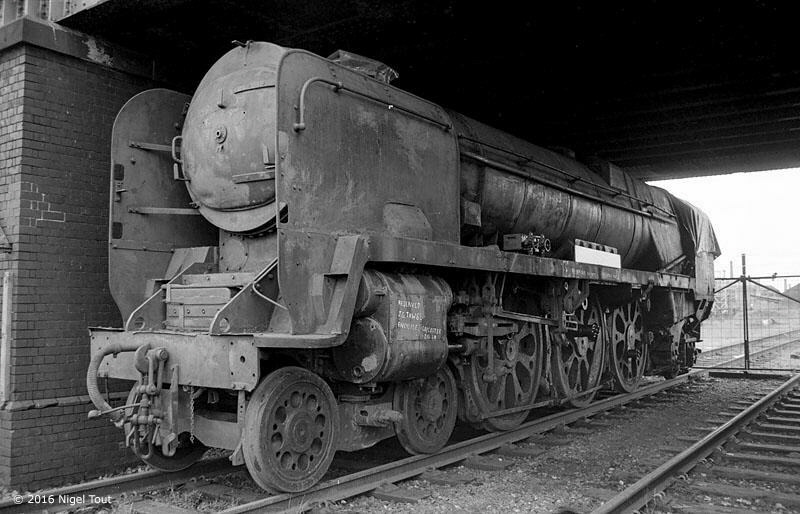
Sheltering under Empress Road bridge was the newly arrived ‘West Country’ pacific, 4-6-2, no. 34039 ‘Boscastle’. This was the first main line steam locomotive to arrive at the preserved Great Central having been bought by James Tawse from the famous scrapyard at Barry. This locomotive was eventually restored to its former glory to haul trains on the GCR. 31/3/73.
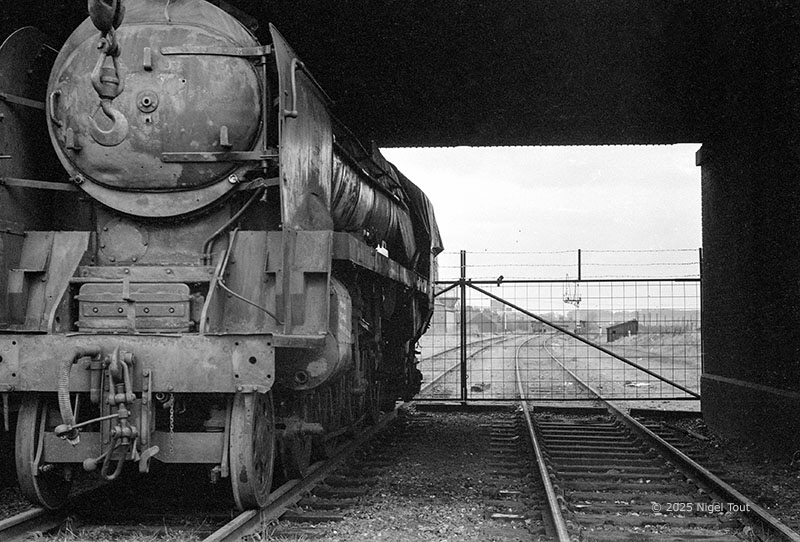
Looking past ‘Boscastle’ under Empress Road bridge the tracks continued northwards for a short distance to buffer stops. 31/3/73.
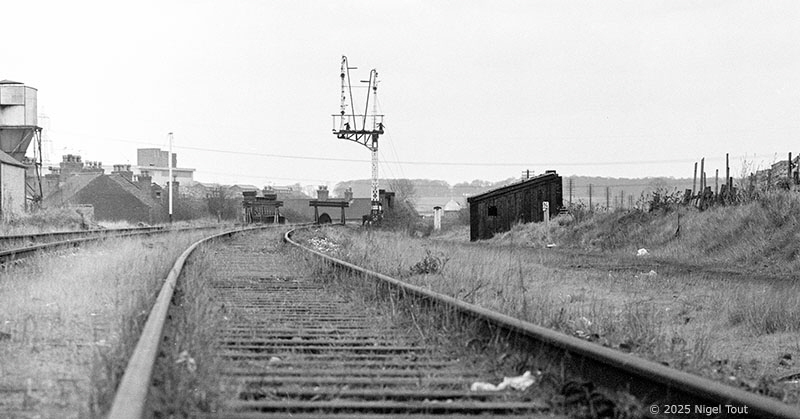
The tantalising view north through the fence under Empress Road to the buffer stops in front of the bridge over the canal. Not long afterwards, the locomotive shed was constructed on this area - see the photograph further down this page. 31/3/73.
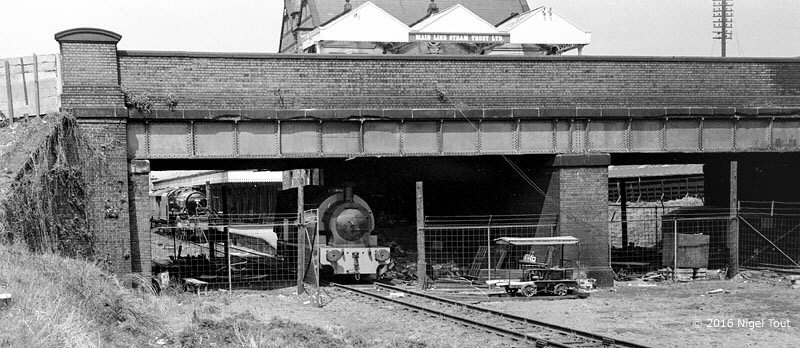
Six weeks later, 0-6-0T No. 39 was sheltering under Great Central Road bridge. Some measure of security could be achieved by locking the gate to the fence made of steel mesh topped with barbed wire. Outside the fence is the Wickam trolley, while ‘black five’ 4-6-0 5231 stands at platform 2. This locomotive had recently arrived from Carnforth in working order and would become the first main line steam locomotive to run on the preserved GCR. 28/4/73.

Looking south from Great Central Road, there were no sidings only the two tracks still in place at the time to Birstall, though it was costing MLST £1,100 a month (about £12,000 a month at 2015 prices according to the Bank of England inflation calculator) to British Railways just to retain these tracks. It did not prove possible to purchase the double track, and British Rail tore up one track, only for it to be relaid at great cost by GCR a couple of decades later, largely financed by David Clarke.
The inaugural train to Quorn & Woodhouse, 1973

‘Black Five’ 4-6-0 5231 at Quorn & Woodhouse with the official inaugural train to Quorn and Woodhouse, 30th September 1973.
TV coverage of trains to Quorn & Woodhouse, 1973
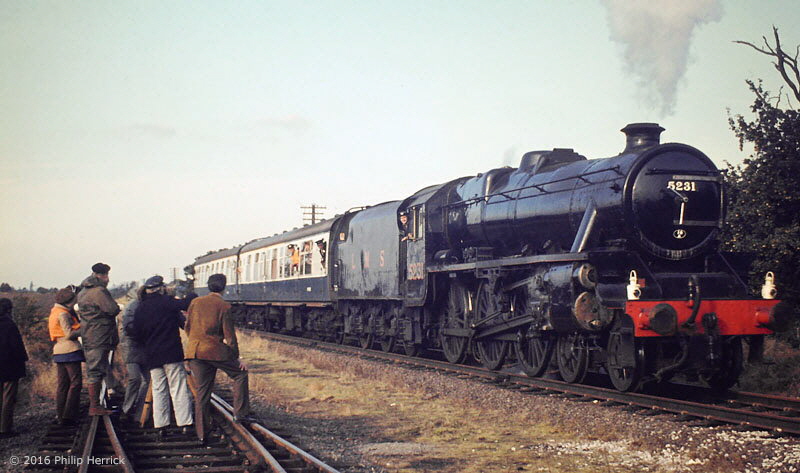
As always, news-worthy events on the GCR were covered by the TV companies. Here is ‘black five’ 5231 giving a run-past at Quorn & Woodhouse. 1973.
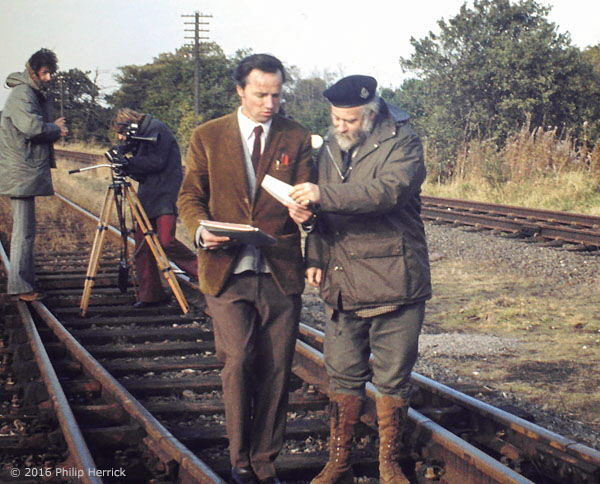
The TV presenter on this occasion was the late Bob Symes, who was also a railway enthusiast. Here, wearing the beret, he is consulting with one of the production team. 1973.
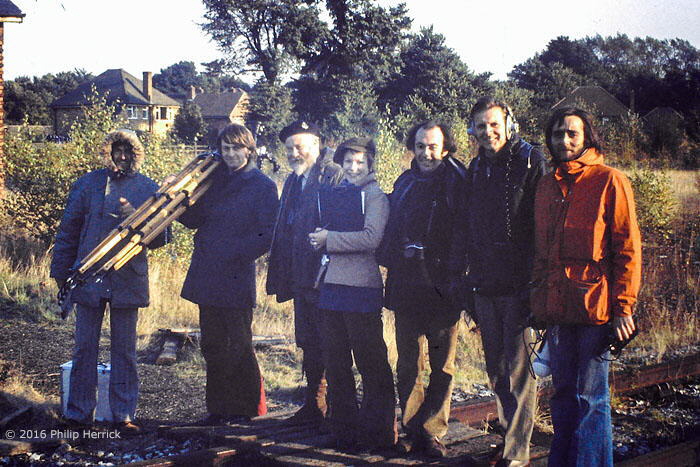
The whole production team poses for a photograph in front of the rather overgrown Quorn & Woodhouse yard (note the corner of the brick shed on the left). 1973.
A Saturday with steam trains operating on the preserved GCR, Autumn 1973
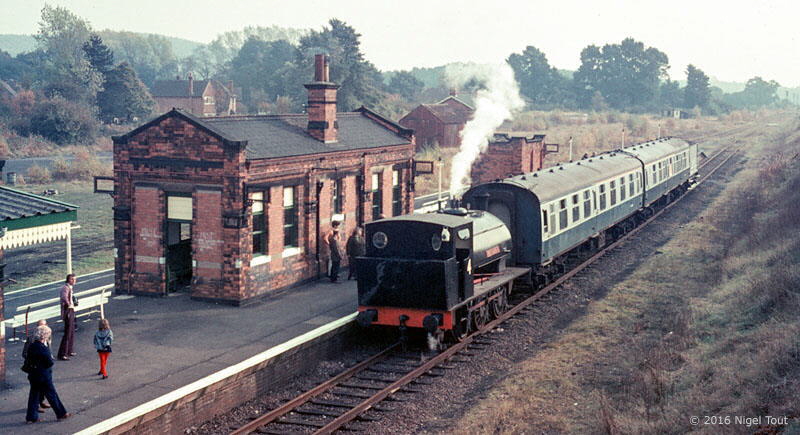
0-6-0T ‘Robert Nelson No. 4’ at Quorn & Woodhouse station with a service train for Loughborough, 27th October 1973. Note the brake van at the rear to provide braking assistance.
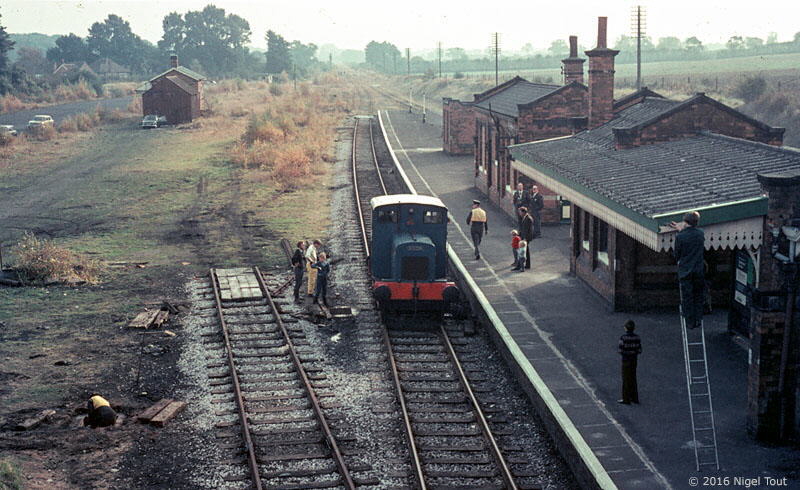
0-4-0 diesel mechanical ‘QWAG’ (initials of Quorn & Woodhouse Action Group) in Quorn & Woodhouse station, where it was being used to shunt the coaches
when a train arrived due to the lack of run-round facilities at the time, 27th October 1973. On that day there were two trains with steam locomotives in use; 0-6-0T ‘Robert Nelson No. 4’, see above, and
‘black five’ 4-6-0 5231.
Quorn yard and the track to the south look very desolate, but work is well under way to get the station spick and span again.
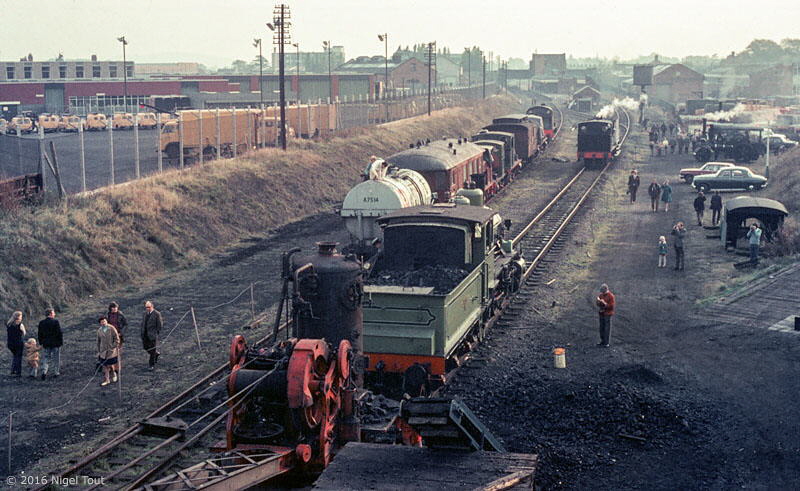
Loughborough yard with the original steam crane in the left foreground, then Norwegian 2-6-0 ‘King Haakon VII’, and 0-6-0T ‘Robert Nelson no. 4’ with brake van, with traction engines on the right, 27th October 1973.

Looking north from Empress Road bridge with work under way on erecting the locomotive shed from the ‘kit-of-parts’ (a former hanger from Langar air
field). Beyond the shed the buffer stops at the end of the tracks can be seen. At left-foreground is the tender of ‘West Country’ class ‘Pacific’ ‘Boscastle’, 27th October 1973.
Of
interest on the left are the premises of William Moss & Sons, construction company, which was once rail connected. This is now Jackson Coachworks and rails can still be seen embedded in the concrete of its yard.
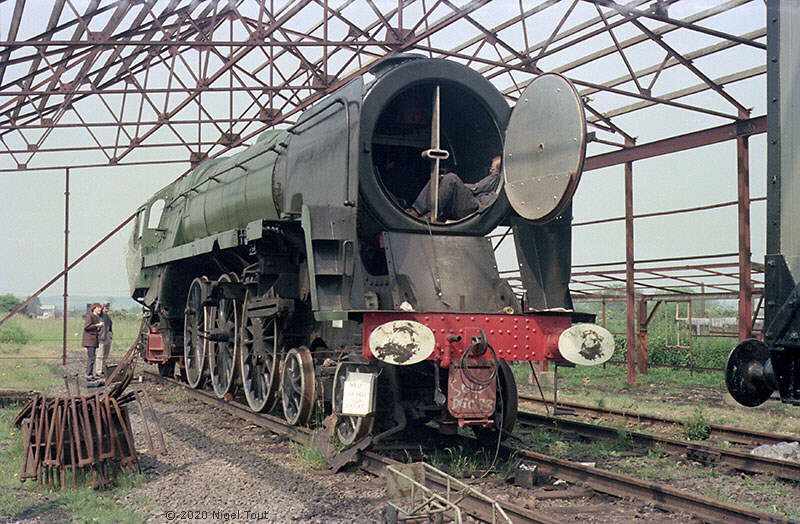
Although the shed was providing little protection at this time, one of the first residents was BR 8P 4-6-2 ‘Duke of Gloucester’ at the start of its “Impossible dream” restoration since it was missing the outside cylinders. 29th June 1974.
Recovering disused trackwork at Leicester West Bridge.
According to Main Line magazine no. 13, Spring 1974, one of the largest gatherings of MLST volunteers toiled over a “long weekend”, based around 23rd and 24th February 1974, to recover disused trackwork from the Soar Lane branch of the former Leicester and Swannington Railway at West Bridge in Leicester.
The bullhead track, donated by the City of Leicester Corporation, included four points; two 1 in 6 turnouts and two 1 in 4 turnouts, and weighed in the region of 30 tons.
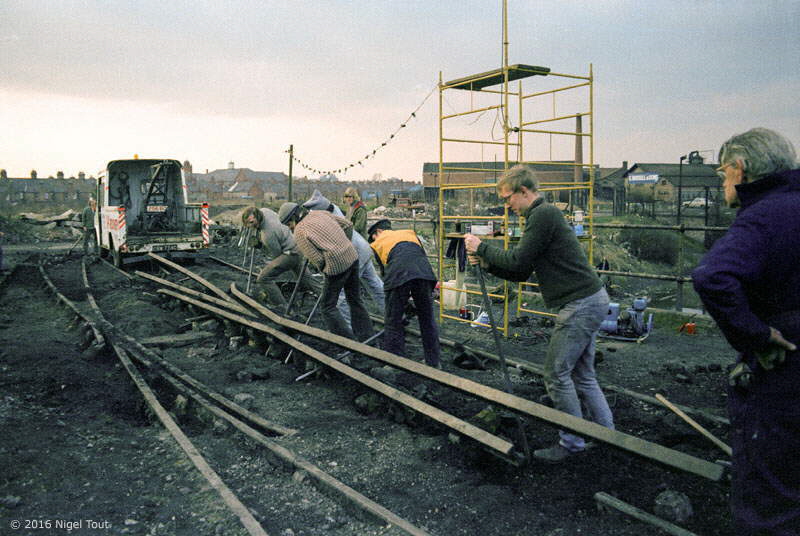
With great effort from the volunteers the point frog starts to be freed, 23/2/74.
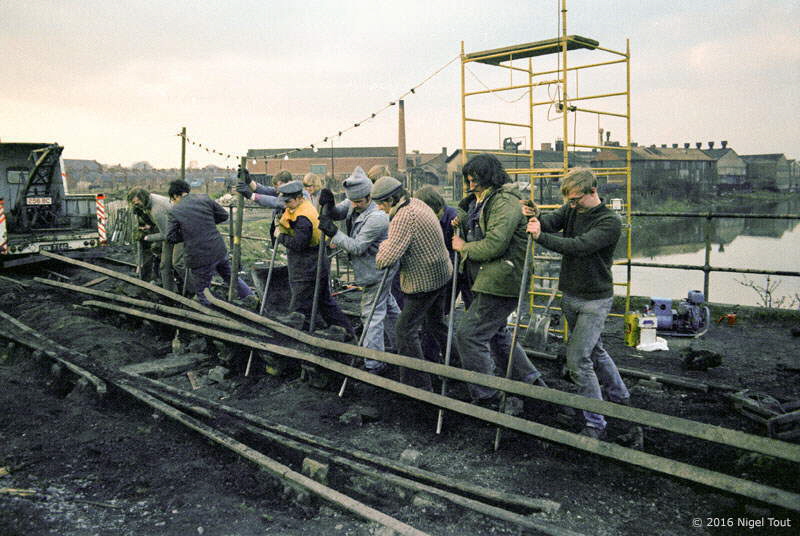
The rail is eventually freed and is ready to be hauled out of the way by the breakdown truck, 23/2/74.
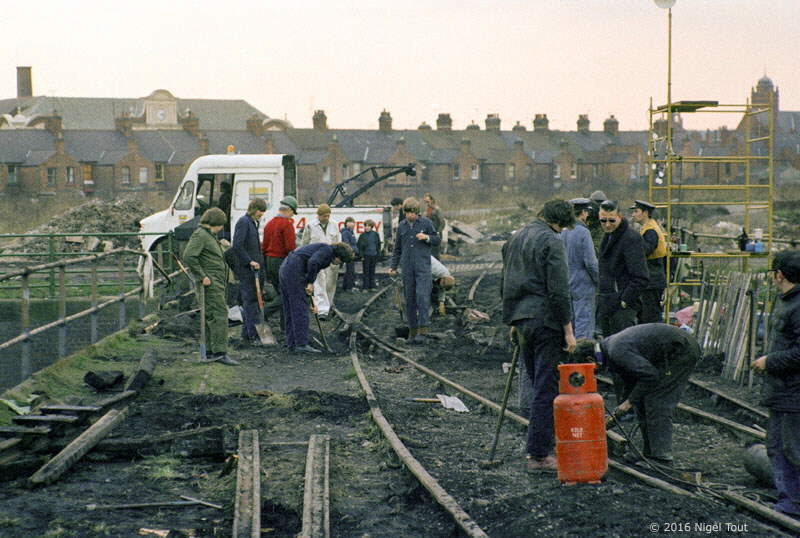
Surveying the next bit of rail to be freed, 23/2/74.

The site of the operation, a bridge over the River Soar on the Soar Lane branch of the former Leicester and Swannington Railway, 23/2/74.
Old Photographs Section
[Leicester North]
[Abbey Lane Area]
[North Viaduct]
[Leicester Central]
[Braunstone Gate]
[Goods Yard]
[Aylestone]
[Bridging the Gap]
[Notes for Visitors]
[Old Photographs]
[Archive]
[Links]
© 2001-2025 Text and photographs copyright Nigel Tout, unless otherwise indicated.